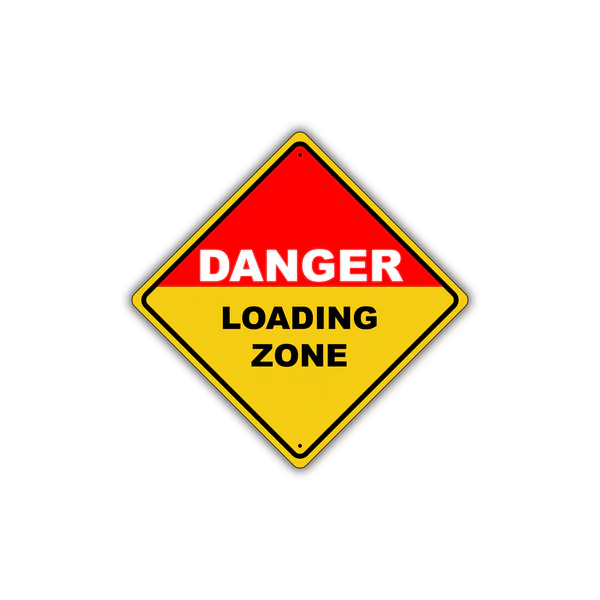Loading docks are essential components of many industrial, commercial, and retail facilities. They serve as the primary hub for receiving and shipping goods, often involving the movement of large trucks, forklifts, and heavy materials. Due to the high level of activity and potential hazards in these areas, loading dock signs play a crucial role in maintaining safety, improving efficiency, and ensuring compliance with health and safety regulations.
The Importance of Loading Dock Signs
Loading dock areas are prone to accidents involving vehicles, equipment, and personnel. These areas are also key points for theft or unauthorized access if not properly managed. Clear and visible loading dock signs help mitigate risks by:
- Directing vehicle and foot traffic safely
- Warning about potential hazards like steep drop-offs, overhead clearances, or moving equipment
- Indicating parking and staging zones
- Providing essential instructions or restrictions to drivers and workers
- Ensuring compliance with OSHA and other local regulations
By delivering concise information quickly and effectively, loading dock signs help create a more organized and safer working environment.
Common Types of Loading Dock Signs
There are various types of loading dock signs tailored to specific functions. Some of the most common include:
1. Directional Signs
These signs help guide truck drivers, delivery personnel, and workers to the correct loading or unloading area. Examples include:
- “Trucks Enter Here”
- “Loading Dock This Way”
- “Receiving Only – Use Door #3”
These signs help reduce confusion, especially for first-time or third-party drivers unfamiliar with the facility.
2. Safety and Warning Signs
These are among the most important types of signs around loading docks. They highlight hazards and promote caution:
- “Watch for Forklifts”
- “Caution: Loading Dock – Stay Clear”
- “Danger: Do Not Enter When Dock Is In Use”
Such signs help prevent accidents by keeping employees and visitors alert to the risks.
3. Parking and Staging Area Signs
Loading docks typically have designated zones for trailer parking, staging of goods, or temporary storage. Signage in these areas includes:
- “Truck Parking Only”
- “Staging Area – No Unauthorized Vehicles”
- “Reserved for Delivery Vehicles”
Clearly marked zones ensure that loading and unloading can be carried out without obstruction or delays.
4. Instructional Signs
These signs offer specific instructions for operations around the dock:
- “Shut Off Engine Before Loading”
- “Chock Wheels Before Unloading”
- “All Visitors Must Report to Office”
Instructional signs contribute to smoother processes and reduce the chance of procedural errors.
Material and Design Considerations
To ensure visibility and durability, loading dock signs are typically made from materials like aluminum, steel, or heavy-duty plastic. Reflective coatings are often added to improve nighttime visibility. Other considerations include:
- Bold lettering for easy readability
- Bright colors like red, yellow, and black for warnings and restrictions
- Pictograms or icons to overcome language barriers and improve comprehension
- Weather-resistant finishes to withstand outdoor exposure
Choosing the right design and material ensures the signs remain effective over time.
Compliance and Legal Requirements
Loading dock signs are not just a matter of convenience—they are often a regulatory necessity. Occupational Safety and Health Administration (OSHA) guidelines require employers to post signs that warn of hazards and communicate safety protocols. Additionally, local fire codes and transportation laws may require specific signs related to emergency exits, loading restrictions, or hazardous material handling.
Failure to properly mark loading dock areas can lead to fines, legal liability, or increased insurance premiums in the event of an accident. Therefore, it is important for businesses to regularly inspect their signage to ensure it meets all current safety standards.
Custom Loading Dock Signs
While many signs are standardized, custom loading dock signs offer businesses a way to communicate site-specific rules or branding. For instance, a warehouse might need a sign reading “Use Intercom to Request Loading Access” or include the company logo for professionalism.
Custom signs can be tailored in terms of size, color, language, and content to suit unique operational requirements.
Conclusion
Loading dock signs are essential for ensuring safe, organized, and compliant operations in any facility involving the movement of goods. From guiding traffic to preventing accidents and enhancing communication, these signs are small tools with a big impact. Investing in the right signage not only protects workers and visitors but also improves workflow efficiency and helps businesses stay compliant with regulatory standards.
